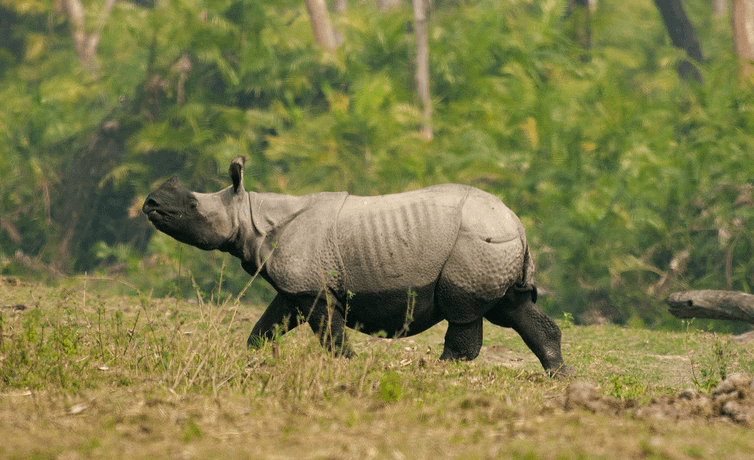
06 May, 2019
Importance of the Conservation of Greater One-Horned Rhinos
From a mere population of 75 in 1905 to 2700 by 2012, the rhino conservation effort of Government of India has seen tremendous success over the years. Of all rhino species, Indian rhinos, also popular as Greater one-horned rhinos, are possibly the most prehistoric ones. Their skin is like a thick armour plate which reminds of dinosaurs. But, it’s the one horn that makes them distinctive and special from other rhino species. Unlike the critically endangered black rhinos, greater one-horned rhinos are counted in the vulnerable category mainly because of the lower threat of poaching. At present, these beautiful species can only be found in two places; Kaziranga National Park in Assam, India and Chitwan National Park in Nepal.
But the situation has not always been the same. These creatures were once at the stage of extinction. In 1986 Indian rhinos were given the status of endangered species. Thanks to the stern policies of the rhino conservation project in India, initiated by the Indian wildlife and the government, that we have seen Indian rhinos repopulated from around 200 in the late 19th century to over 3000 at present.
Reasons Behind the Declining Population of Rhinos
Sport Hunting: In the late 1800s and early 1900s, there was a trend amongst royals for sport hunting. It was during this period when Greater one-horned rhinos were hunted continuously and relentlessly. There were several reports that claimed that the Britishers in Assam, especially military officers, killed more than 200 Indian rhinos out of sport hunting. And as a result of that, the population of these wild species declined to around 12 in Kaziranga National Park by the year 1908.
Poaching: Poaching has always been a threat to wildlife. It is the most important reason for the decline in the population of Indian rhinos. In the early 20th century, legal hunting banned in India by the concerned authorities in order to put conservation measures for wildlife, especially the rhinos. But despite the effort, poaching was still a major threat for these creatures. From the year 1980 to 1993, 692 rhinos were killed due to poaching. As a result of this, the Indian rhino species was on the stage of extension by mid-1900s. Not just this, poaching was a major concern even till a few years back.
In January 2019, an RTI was filled by a Noida based environmentalist regarding rhino poaching. In response to that, a data report was made public by the Wildlife Crime Control Bureau (WCCB). It says that since 2008, a total of 102 one-horned rhinos have been poached in India.
As per the report of Wildlife Crime Control Bureau (WCCB), the state Assam, which has the highest Rhino population, witnessed the maximum number of rhino poaching cases. A total of 84 rhino deaths were reported due to poaching in Assam since 2008. Whereas, West Bengal witnessed 17 rhino deaths. Uttar Pradesh also comes on the list with one death.
| State | Number of Rhino Deaths Because of Poaching |
| Assam | 84 |
| West Bengal | 17 |
| Uttar Pradesh | 1 |
In the case of poaching, various methods of hunting rhinos have been recorded:
- The most common method is shooting. For that, sharpshooters are hired by rhino horn traders. Not just this, they even provide them rifles and ammunition to carry out the entire act of poaching.
- Poachers also used electrocution. For that, they connect the insulated road to a wire from the high voltage power lines that pass through the protected area.
- Spearing is another way which is used by poachers to kill Indian rhinos. However, the deaths of rhinos from this method has only been recorded in Chitwan National Park.
- Depending on the availability of grass and on terrain, poachers also dug out pits to trap rhinos. These pits are dug out in such a way that they ensure a little space for movement so that, the horn can easily be sawn off.
- Using zinc phosphide and pesticides as poisons on salt-licks is another way used by poachers.
- Using of a noose to strangle rhinos.
Habitat Loss or Human-Rhino Conflict: With the increasing human population, the needs of every human being is also increasing. Since a long time, humans are entering in the wildlife habitat
In order to have fresh lands. This results in the disappearance of alluvial plain grasslands that are the necessity of rhinos. Because of the habitat, the territories of rhinos are also declining. As an outcome of that, they frequently leave their protected area for forage in the nearby settlements. Numerous cases have been reported of rhinos killing humans or humans killing rhinos for entering in their settlement.
Population Density and Genetic Diversity: Some times, high population density can also be a reason to start a conservation programme. High population leads to lower breeding rates.
Steps Taken Towards Rhino Conservation in India
Since 1986, these wild creatures has been listed as endangered in the list of CITES. However, in 2008, Indian Rhinos were listed as vulnerable on the International Union for Conservation of Nature (IUCN) Red List. From the journey of endangered to vulnerable includes various strict measures and policies that have imparted by the government in association with World Wide Fund for Nature (WWF) and other non-government organization that work towards wildlife conservation. Although there has been a tremendous decline in the number of poaching cases but the battle is yet not over.
Indian Rhino Mission 2020: Despite the strict measures and policies, there always remains a major threat of poaching to Indian rhinos. Back in the year 2005, the Assam government along with the International Rhino Foundation, the World Wide Fund for Nature (WWF), the Bodoland Territorial Council, and the U.S. Fish & Wildlife Service launched the ‘Indian Rhino Mission 2020’. This entire mission was basically an effort to attain the rhino population of at least 3000 in seven protected areas of Assam by the year 2020. Under this initiative, Indian rhinos are moved by the concerned authorities from the crowded places like Pobitora Wildlife Sanctuary and Kaziranga National Park to protected areas. The reason for doing so is to provide ample space to these creatures to breed so they can live long.
As per the International Rhino Foundation (IRF), from 2005 to 2008, they worked with the concerned authorities and local communities for the better protection of Indian rhinos. Not just this, they also kept a record of the existing population. Along with that, patrol roads, guard posts and bridges were also built during that to ensure smooth monitoring of the rhino population.
From 2008, they began translocating the rhinos. By 2012, IRV 2020 successfully translocated 18 greater one-horned rhinos from Kaziranga National Park and Pobitora Wildlife Sanctuary to Manas National Park. Apart from this, additional 8 rhinos were also moved to Manas National Park for wildlife conservation and rehabilitation. Since the translocation took place, a total of 14 calves were born in Manas.
Wild to Wild Translocation:
| Year | No. of Rhinos |
| 2008 | 2 |
| 2010 | 2 |
| 2011 | 4 |
| 2012 | 10 |
| Total | 18 |
As per the data of Indian Rhino Vision 2020 Population Modelling Workshop, November 2014 Final Report, from 2008 to 2012, a total of 18 rhinos were translocated to Manas National Park.
Source: Indian Rhino Vision 2020 Population Modeling Workshop, November 2014 FINAL REPORT.
However, despite this effort, 8 rhinos were hunted by the poachers in 2012 - 2013. Thereafter, the translocation project was halted and focus was moved on to providing security to rhinos. With all the efforts and security measures, the park was only one poaching case was recorded in 2014 and 2017.
Source: IRV 2020 by International Rhino Foundation
Restoring Landscapes: With the rise in rhino popular, there would there was a need for additional space to breed and live. All the concerned organization started restoring rhino habitat not just in India but Nepal as well. For that, habitat corridors were secured so that these creatures can move to higher areas during flood times.
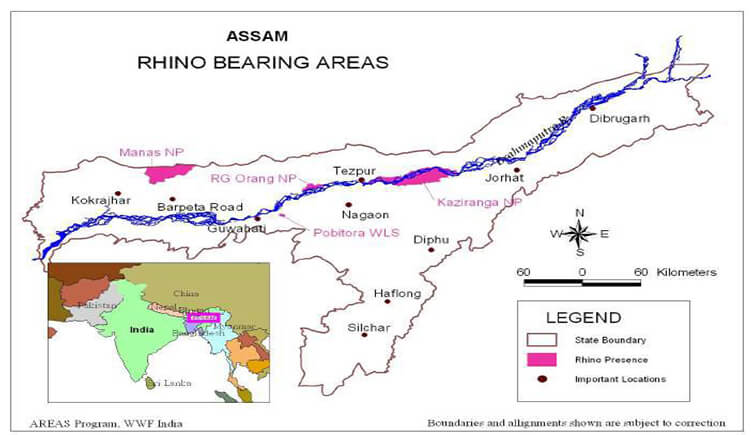
Map of Assam showing National Parks and Wildlife Sanctuaries holding populations of Greater One-Horned rhinos as of November 2014. Figure based on the map created by the WWF AREAS Program.
Working with Locals: In India and Nepal, protected areas of greater one-horned rhinos are engirdled by human settlements. Therefore, it was important for the rhino conservation in India that the locals residing around the rhino reserved must sympathetic towards the species. Several projects have been carrying out towards the conservation of Indian rhinos that also ensure livelihood to locals by asking them to plant several specific floral species that support anti-poaching operations. This also helps in reducing the conflicts between humans and rhinos.
Reducing Illegal Trade: Several measures are being taken to stop the illegal trade of rhino horn by its concerned organization along with TRAFFIC, a wildlife trade monitoring network. Intelligence network and anti-poaching patrols are operating from strategic locations to prevent illegal trade of rhino horns in the black markets of Asia.
Monitoring and Census: In every three years, the census of Indian rhinos is done in Kaziranga National Park. This census is carried out in a visual count form. Along with that, a recording of mortality is also carried out during this time.
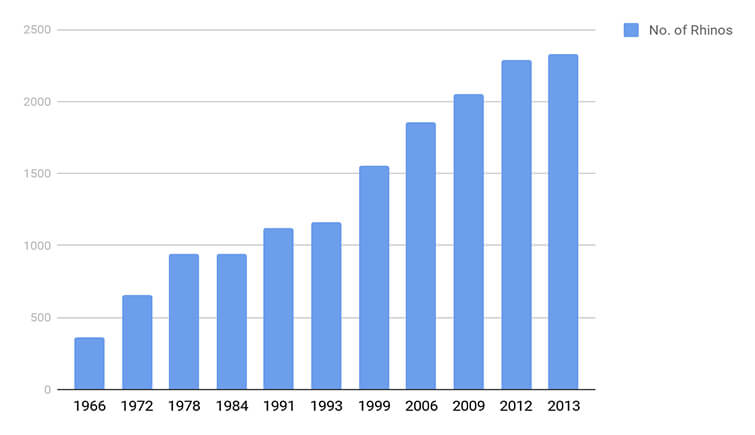
Source: Indian Rhino Vision 2020 Population Modeling Workshop, November 2014 FINAL REPORT.
Reinforcing the Law Enforcement: All the concerned rhino conservation experts along with the state government aim to strengthen the wildlife laws and their enforcement. They also fund anti-poaching resources and operations in the protected areas. A debatable measure, Kaziranga National Park in Assam has implemented a law in which guards or forest rangers can shoot a poacher in order to save rhinos.
Positive Outcomes of the Entire Conservation Project
The same RTI which was filled by Ranjan Tomar in January 2019 also sought the number of arrests made in rhino poaching cases in India. In their reply, WCCB stated a total of 209 arrests have been made in rhino poaching cases since 2008.
The same data also revealed the as much as 102 deaths of Indian rhinos have been reported in the last ten years because of poaching. However, the interesting thing to know here is that the numbers after 2013 and 2014 are decreasing significantly, except for 2018.
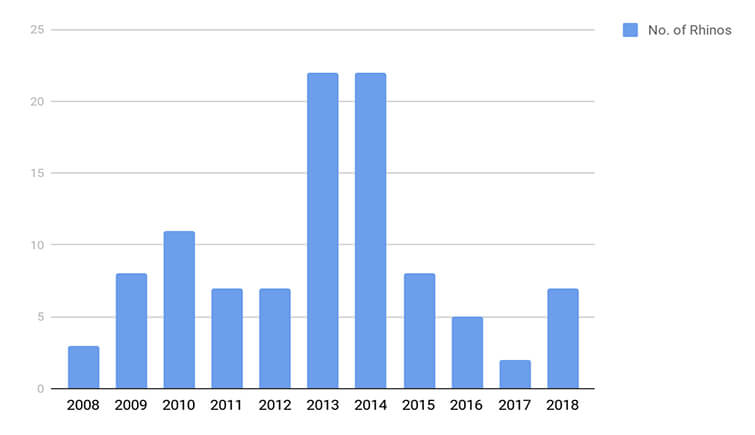
Source: Deaths of Rhinos in India because of poaching from 2008 to 2018 as per WCCB report.
If we see the previous data, it states that the state of Assam, in almost every year, witnessed more than 10 deaths of Indian rhinos because of poaching. And as compared to the previous data, the current one depicts the success of this Rhino conservation programme in India.
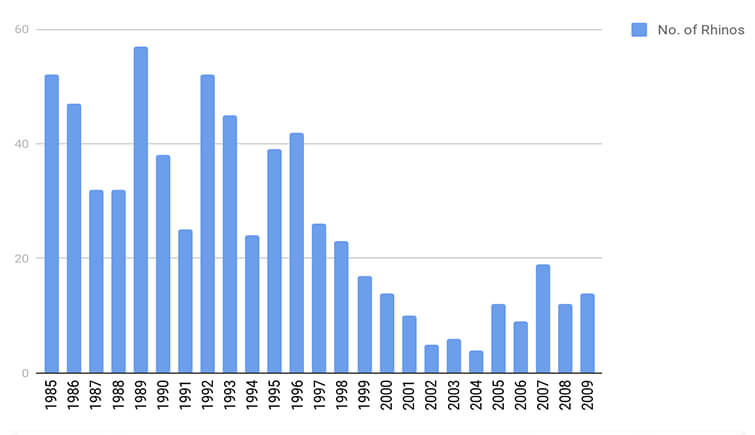
Rhino Poaching in Assam from 1985 to 2009 as per November 2014 Indian Rhino Vision 2020 Workshop Final Report.
How You Can Be a Part of the Solution to Conserve Indian Rhinos
As they say, even a small effort counts!
Being a part of society, it’s very important to be aware of the importance of rhino conservation in India from our part. There are a number of ways that you can follow in order to ensure how to save Indian rhinos.
Engage with the Wildlife Conservation Community: One of the most important ways to support this whole project is following various wildlife conservation communities that work to conserve greater one-horned rhinos. You can either take out come time to support park rangers or can donate some amount to the concerned foundation or can also support high-profile campaigns. Writing letters to policymakers to ask them to help to save the Indian rhino species.
Visit National Park: Though it might not sound like a way to support the cause, but trust me, it is. By visiting a national park, you contribute towards wildlife economy which eventually helps in maintaining smooth operation of this cause.
Say No to Animal Products or Illegal Wildlife Parts: The only reason why these innocent creatures are getting hunted is because of trivial needs. If you really want to conserved wildlife then you must know this thing that when buying stops, the killing can too.
Learn More about the Risks to Wildlife: In order to be aware of wildlife conservation, you need to first learn about it and risks to wildlife. Not many know that the wildlife habitat also gets affected because of people who visit national parks and wildlife sanctuaries. Unaware of the consequences, we tend to pollute the wildlife environment by leaving our carbon footprints.
Spread Your Awareness to Inspire Others to Act: You can help rhino conservation project by being a helping hand of various organisations and foundations and staying connected with them. From your part, you can impart your knowledge to others educate them about the importance of wildlife conservation in India. It is the easiest and effective way to make more and more people work towards the conservation programme.
In today’s world where a number of wildlife species are on their brink of extinction, we have given ourselves a chance to make sure to not make the Indian rhino species going into the category of endangered again. So, let’s take a pledge to even contribute a small amount of our effort towards this great cause. Just make sure do not let the beautiful greater one-horned rhino species to say bye to this world so soon.
Research References:
Writer: Jatin


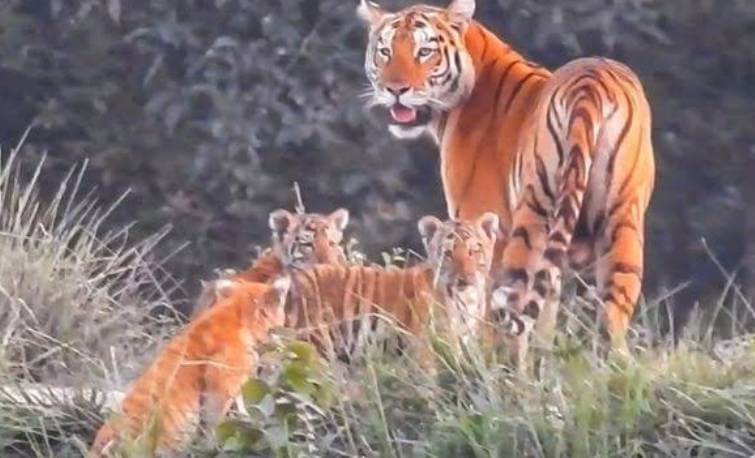
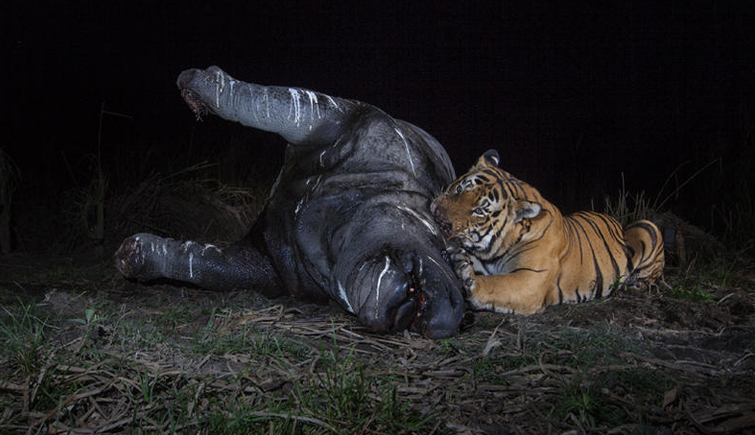
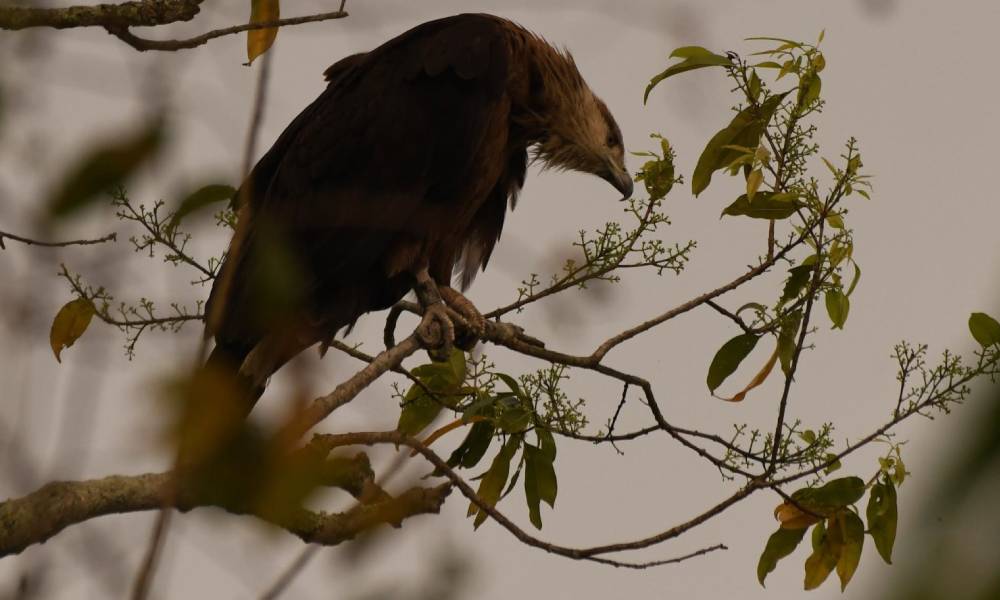
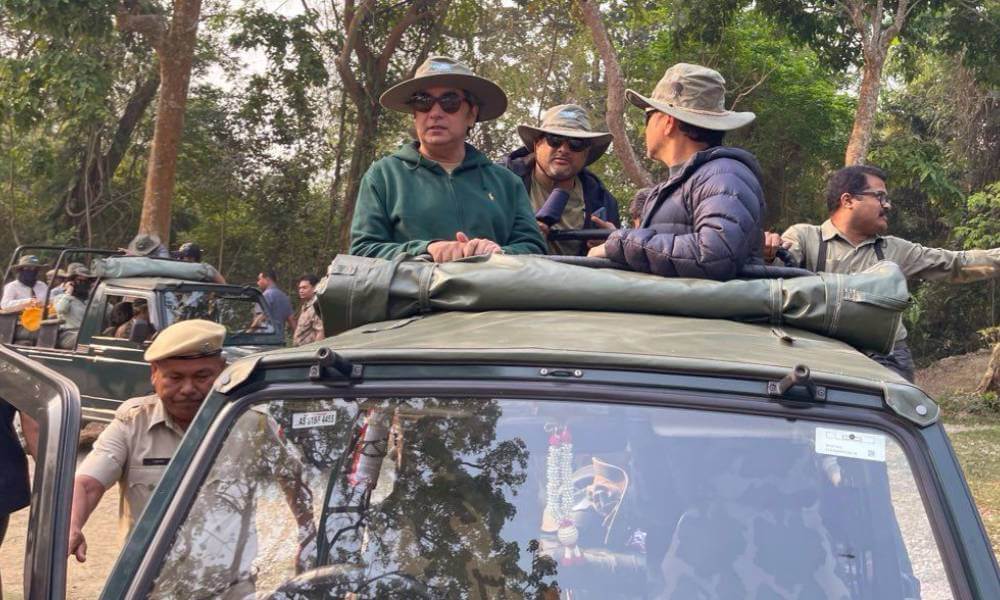
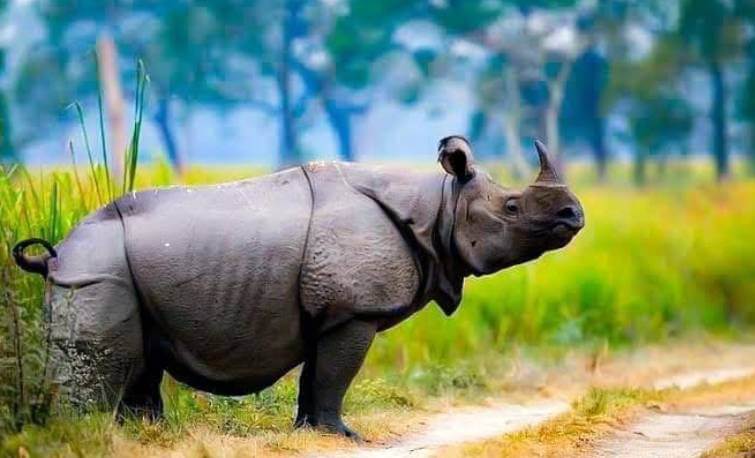




 Share
Share Home
Home Packages
Packages Book Now
Book Now